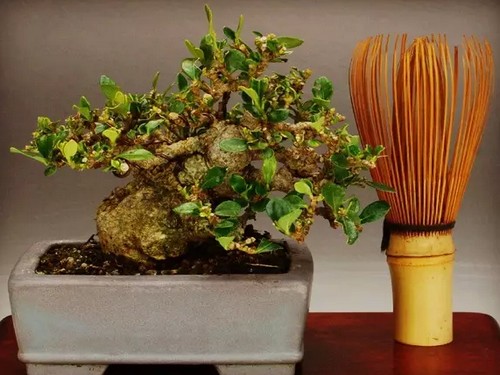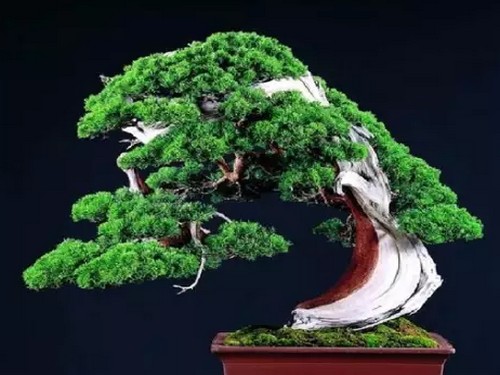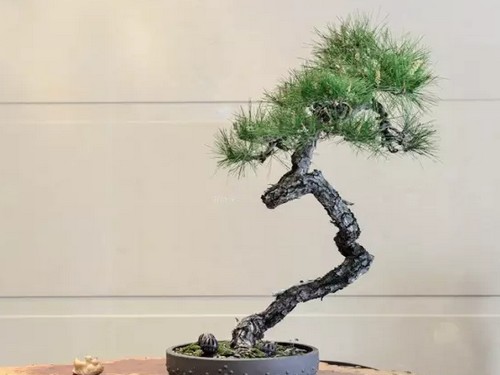Gardenia bonsai is based on cultivation.
Gardenia leaves bright green, evergreen four seasons, large white flowers, fragrant and fragrant, but also has a certain shade-resistant and anti-toxic gas ability, so it is a good greening, beautification, fragrance materials, can be planted in clusters or configured in the forest edge, courtyard, corner, roadside, planting as a hedge is also very suitable for balcony greening, potted flowers, cut flowers or bonsai are very suitable, can also be used for street and factory greening. The material selection of gardenia for bonsai production mainly comes from the following methods.

Artificial reproduction:
Mainly to cuttage propagation, but also can be striped, split or sown propagation.
(2) the strip pressing method is mostly carried out from May to June. Select 1-2-year-old strong gardenia branches, 25-30 cm long, pressed into the same plant pot or another pot, 2-3 cm deep, about 1 month to take root, 2 months later cut off the mother plant, transplant into another flowerpot.
(3) Air striping method: 2-3-year-old branches can be selected for ring peeling and air pressure on an adult Gardenia jasminoides. The whisker root can be grown in about 4-5 days, and then cut off the mother plant from the lower part of the strip, take the soil ball and plant it into a pot, put it in a cool place and slow down to become a new plant.
(4) ramet method: if 2-3 branches grow side by side at the base of the root of Gardenia jasminoides in May, they can be cut from the root with a knife, each ramet with fine roots, and then planted in another pot. Put it in a cool place, avoid pouring fertilizer and water, and after the new buds are issued, you can put it in the sun to manage.
In the south, a water insertion method is used to propagate, using the current year's twigs, which are 12-15 cm long, soaked in clear water up to 12, change the water once a day, and put it in the semi-shade. B can produce new roots in about 20 days.
Mountain mining:
Gardenia jasminoides and sparrow tongue flowers are mostly wild in the mountains south of the Yangtze River Basin, which can be dug by those with stout roots and short plants, and transplanted to the basin with soil, which can be made into beautiful bonsai.
Time: 2019-06-02 Click:
- Prev

Material selection and cultivation of real cypress bonsai
Real cypress bonsai has always been famous in bonsai circles at home and abroad for its old stem, tight leaves and graceful posture, especially in Japanese bonsai exhibitions, which are made of century-old cypress, with white bones and red skin, such as swimming dragons, vigorous and simple, with Xianjia style, which can be called the top grade of bonsai. The true cypress of potted plants in Taiwan
- Next

Selection and cultivation of bonsai of Pinus taiwanensis
Huangshan pine is green, vibrant, with erect branches, straight up, thin leaves such as needles, comb the wind to cover the green, evergreen all seasons, is one of the best ornamental pine species. Bai Juyi, a great poet of the Tang Dynasty, once praised his character and said: pine on the pavilion, sunrise all his life, towering trees, cookie sticks 100 feet long, snow all over the mountain at dusk.
Related
- Fuxing push coffee new agricultural production and marketing class: lack of small-scale processing plants
- Jujube rice field leisure farm deep ploughing Yilan for five years to create a space for organic food and play
- Nongyu Farm-A trial of organic papaya for brave women with advanced technology
- Four points for attention in the prevention and control of diseases and insect pests of edible fungi
- How to add nutrient solution to Edible Fungi
- Is there any good way to control edible fungus mites?
- Open Inoculation Technology of Edible Fungi
- Is there any clever way to use fertilizer for edible fungus in winter?
- What agents are used to kill the pathogens of edible fungi in the mushroom shed?
- Rapid drying of Edible Fungi

